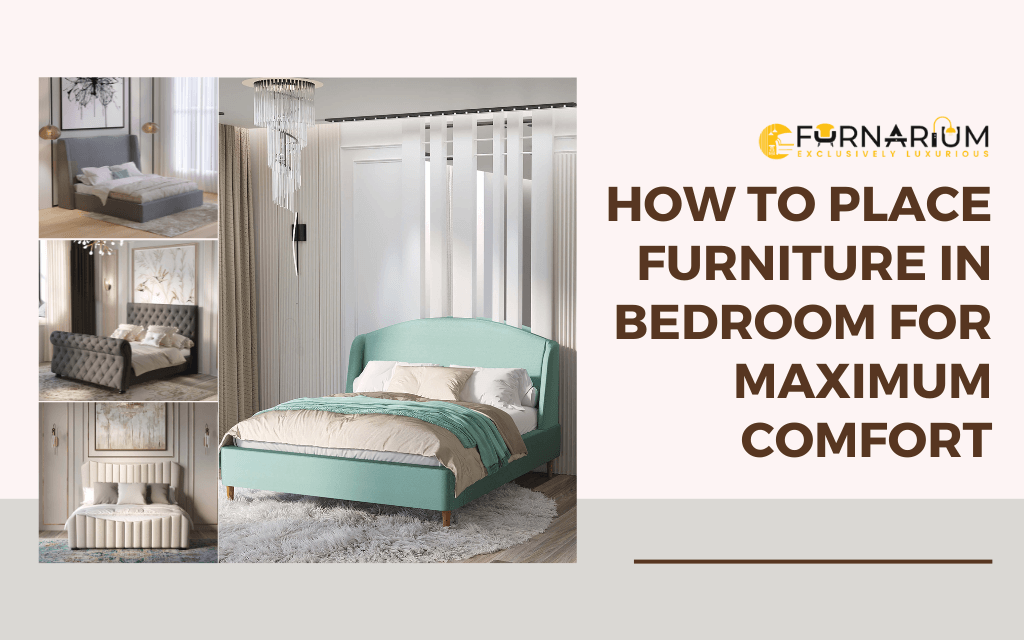Have you ever walked into a room and felt something was off? Sometimes, all it takes is a smart rearrangement of your bedroom furniture to turn a mundane space into a serene sanctuary. Whether you’re a new homeowner, a furniture enthusiast, or someone simply looking to refresh their space, this guide will help you master the art of bedroom furniture arrangement. In this post, we’ll walk you through the principles, tips, and steps needed to create both a functional and aesthetically pleasing bedroom.
Why Bedroom Furniture Arrangement Matters
Impact on Sleep Quality
A well-arranged bedroom can significantly improve your sleep quality. The position of your bed, for example, can affect how well you sleep by influencing lighting, noise levels, and overall comfort. Studies have shown that a clutter-free environment promotes better sleep because it reduces stress and anxiety.
Daily Routine
Your bedroom layout can either streamline or disrupt your daily routines. A thoughtfully arranged bedroom ensures that you can move around freely and access everything you need without hassle. This can make your mornings smoother and evenings more relaxing, setting the tone for your entire day.
Mental Health
Did you know that the way your furniture is placed can impact your mental health? A cluttered, disorganized space can contribute to feelings of overwhelm and stress. On the other hand, a well-arranged bedroom can provide a sense of control and calm, improving your overall mental well-being.
Principles of Bedroom Furniture Arrangement
Balance
Balance is crucial when arranging your bedroom furniture. It ensures that the room feels stable and harmonious. Balance can be achieved by distributing furniture evenly throughout the room. For example, if you have a large bed on one side, balance it out with dressers or chairs on the opposite side.
Flow
Flow refers to how easily you can move around your bedroom. Ensure there are clear pathways between furniture pieces. This not only makes the room more functional but also safer, reducing the risk of tripping over obstacles.
Function
Every piece of furniture should serve a purpose. Avoid overcrowding your bedroom with items that you rarely use. Instead, focus on furniture that meets your daily needs, like a comfortable bed, a practical dresser, and bedside tables.
Step-by-Step Guide to Placing Furniture in the Bedroom
Arranging the Bed
The bed is usually the focal point of the bedroom. Place it against the longest wall to maximize space. Ensure that it is easily accessible from both sides, especially if two people share the bed. If possible, position the headboard against a solid wall to create a sense of security.
Placing Dressers
Dressers are essential for storage but can take up a lot of space. Position them against walls to keep the floor space open. If your bedroom is small, consider tall, narrow dressers that offer ample storage without occupying too much room.
Positioning the Wardrobe
Wardrobes can be bulky, so their placement is crucial. Ideally, place the wardrobe in a corner to minimize its impact on the room’s flow. If you have a built-in wardrobe, ensure that it is easily accessible but not blocking any pathways.
Including a Couch
If you have the space, a couch can add both comfort and style to your bedroom. Place it at the foot of the bed or in a cozy corner, depending on the room’s size and layout. Make sure it doesn’t obstruct pathways or make the room feel cramped.
Tips for Small and Large Bedrooms
Small Bedrooms
For small bedrooms, opt for multifunctional furniture. Beds with storage drawers or foldable desks can save space. Use mirrors to create the illusion of a larger room, and keep the color palette light to make the space feel more open.
Large Bedrooms
In large bedrooms, the challenge is to avoid a cluttered look. Use area rugs to define different zones, such as a sleeping area and a sitting area. Large pieces of furniture can help fill the space without making it look overcrowded.
Creating a Focal Point
Selecting a Focal Point
A focal point draws the eye and adds visual interest to the room. The bed is often the natural focal point, but you can also use a statement piece like a large artwork, a fireplace, or a beautifully designed headboard.
Arranging Around the Focal Point
Once you’ve chosen your focal point, arrange your furniture to complement it. For example, if the bed is your focal point, position bedside tables and lamps symmetrically on either side to enhance its prominence.
Final Touches and Considerations
Lighting
Good lighting can transform a room. Combine ambient lighting with task lighting to create a well-lit and functional space. Table lamps, floor lamps, and even string lights can add warmth and character to your bedroom.
Color and Personal Style
The colors you choose can affect the room’s mood. Soft, calming colors are ideal for bedrooms as they promote relaxation. Incorporate your personal style with decorative elements like throw pillows, artwork, and rugs to make the space truly yours.
Personal Touches
Don’t forget to add personal touches that make the room feel like home. Family photos, souvenirs from travels, and favorite books can add personality and warmth to your bedroom.
Recap and Conclusion
Arranging bedroom furniture is more than just a practical task; it’s an art that can significantly impact your quality of life. By following the principles of balance, flow, and function, and by considering the specific needs of your space, you can create a bedroom that is both beautiful and functional. Whether your bedroom is small or large, these tips will help you optimize the space for comfort and style.
Ready to transform your bedroom? Start rethinking your layout today and experience the benefits of a well-arranged space. If you need personalized advice, consider consulting with a professional interior designer who can help bring your vision to life.

